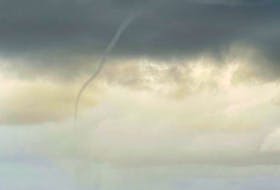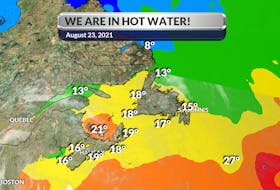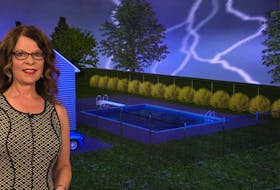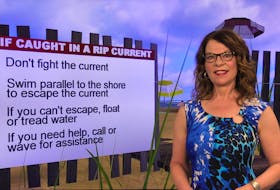Words. We use them every day. Sometimes we use words that have more than one meaning.
The word “ceiling” is a good example. By definition, it is the overhead surface of an inside room. But did you know that simple seven-letter word also has a meteorological definition?
That’s what prompted Stuart to send this email: “I was watching the Weather Network one day last week when one of their screens containing current weather conditions mentioned a ceiling of 6,000 ft.”
That ceiling is defined as the height above the ground, of the base of the lowest layer of clouds that obscures more than half the sky. In other words, if more than half the sky you see from where you stand is covered by clouds, you have a ceiling and the height of the cloud’s base is the height of your ceiling.
The ceiling can be estimated by visual means or measured by a ceilometer. The ceilometer sends a laser beam upwards every 15 seconds. This laser determines the cloud height. The cloud height is recorded in feet above ground level, usually in intervals of 100 feet. High clouds above 10,000 feet are recorded in thousands of feet above ground level. Most ceilometers detect clouds up to 12,000 ft. Some can detect clouds as high as 32,000 feet.
The ceiling is not very interesting for a seafarer but it’s very interesting for an aviator. Ceilings for arrival and departure at airports impact aircraft operations around the world. Conditions are most significant when the sky is totally obscured and particularly when local terrain is also a factor.
Great question Stuart!
- Read more Weather University columns.
- Have a weather question, photo or drawing to share with Cindy Day? Email weathermail@weatherbyday.ca
Cindy Day is the chief meteorologist for SaltWire Network.









